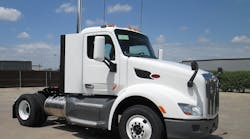Here’s a thought to consider as we move toward autonomous vehicles. I was reading an ad in the first issue of an SAE Magazine called Autonomous Vehicle Engineering. A company was advertising its software that simulates the accumulation of road debris and snow. The intent being that engineers will design the sensor system to minimize the impact, possibly through software and hardware redundancy. Hmm. That got me thinking.
I remember when the Century Class truck first came out in about 1997 that we had designed a “squirter system” into the headlamp to clear it of debris. That reminded me of several European car designs that had actual wipers attached to the headlamps to clear them during foul weather. Then, I had a vision (all puns intended). We could end up having a vehicle that has wipers on the windshield and wipers on the headlamps and wipers on every vision sensor in the vehicle. Maybe, even the LIDAR sensor will need a wiper or two or three. Maybe we can get rid of the wiper on the window, because we don’t have a driver that needs to see that much of the view anymore. We just need a small wiper on the camera and LIDAR.
But then I realized that today the driver is responsible for keeping the windshield clear with the wipers so that he or she can drive safely. If the vehicle is autonomous, even if it does not need a huge window with big wipers on it, who is going to be responsible for clearing the view of the sensors that are needed for autonomously operating the vehicle? There’s good reason why only recently have suppliers started talking about testing autonomous vehicles in winter conditions.
I enjoy playing peek-a-boo with my 8-month old grandson. Let’s find a better solution for an autonomous vehicle.



